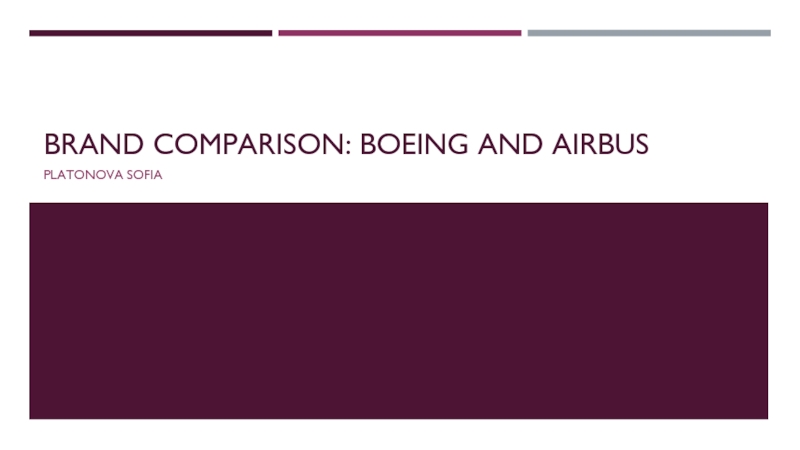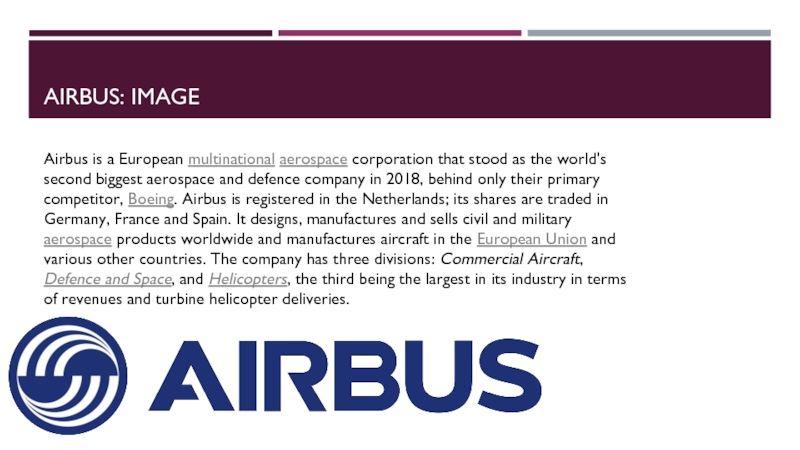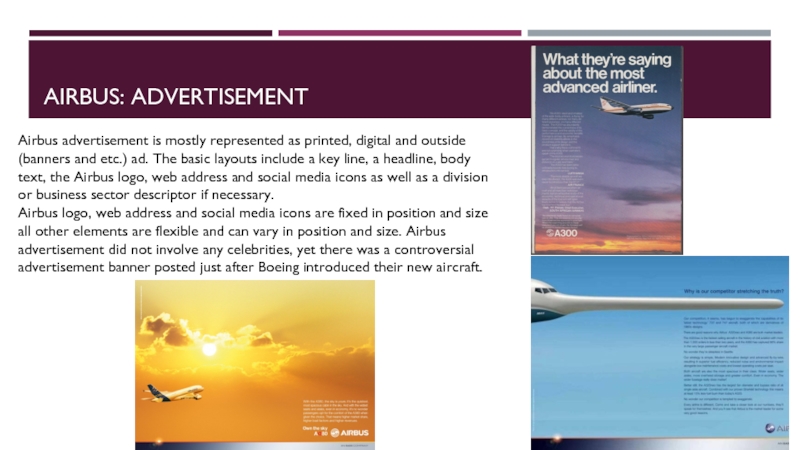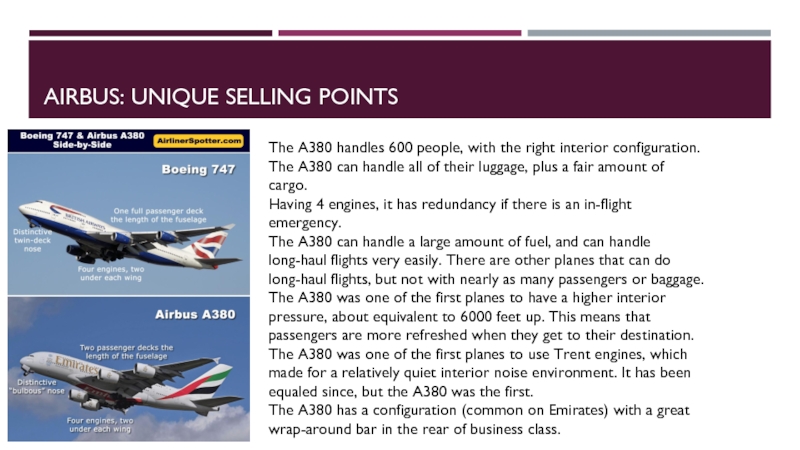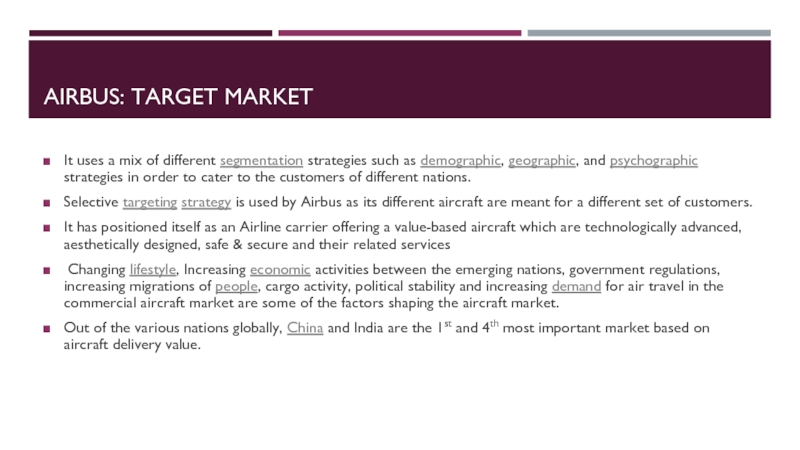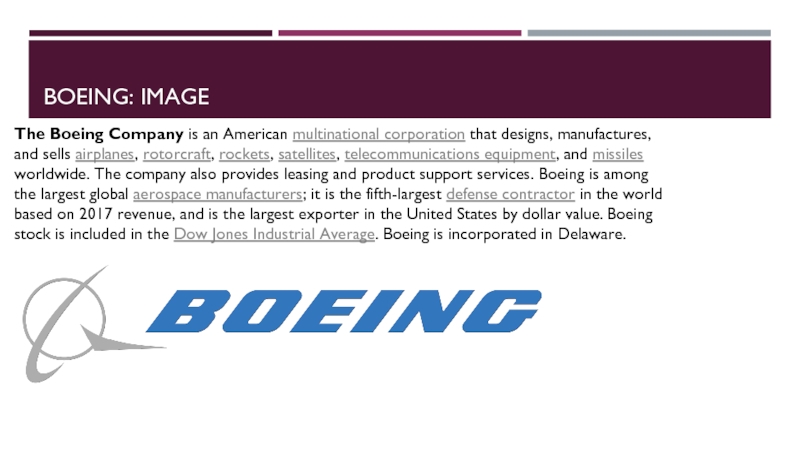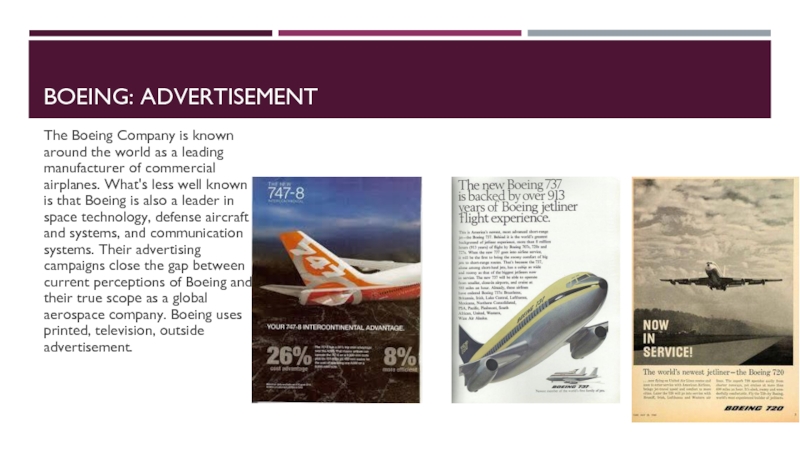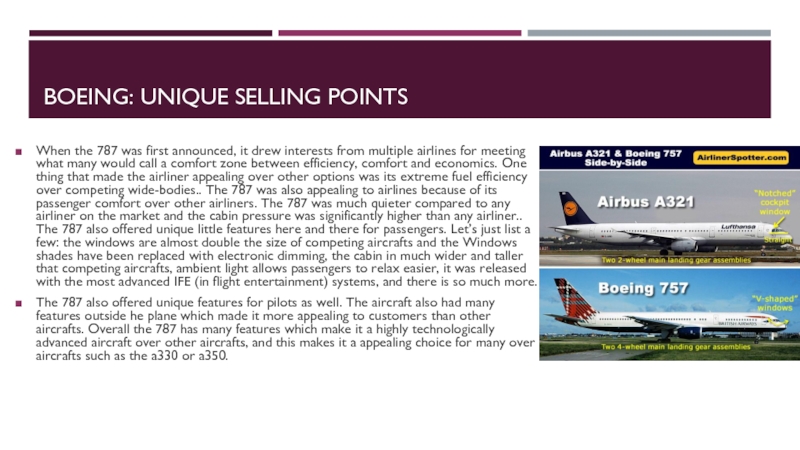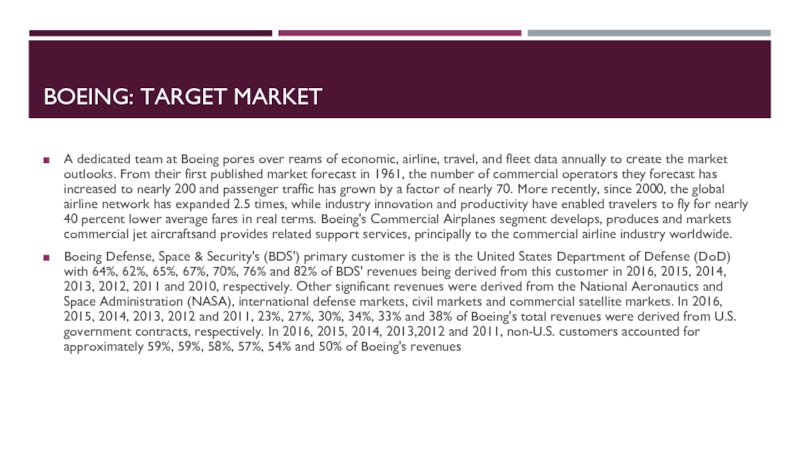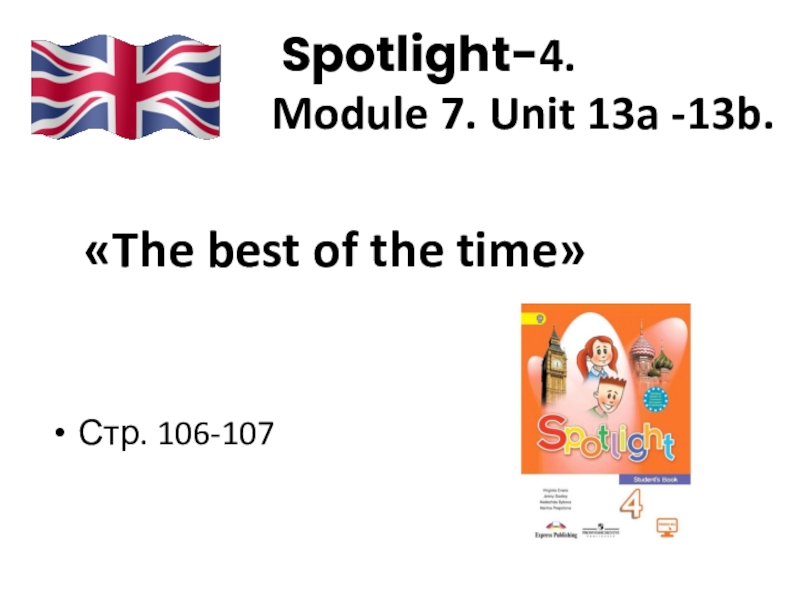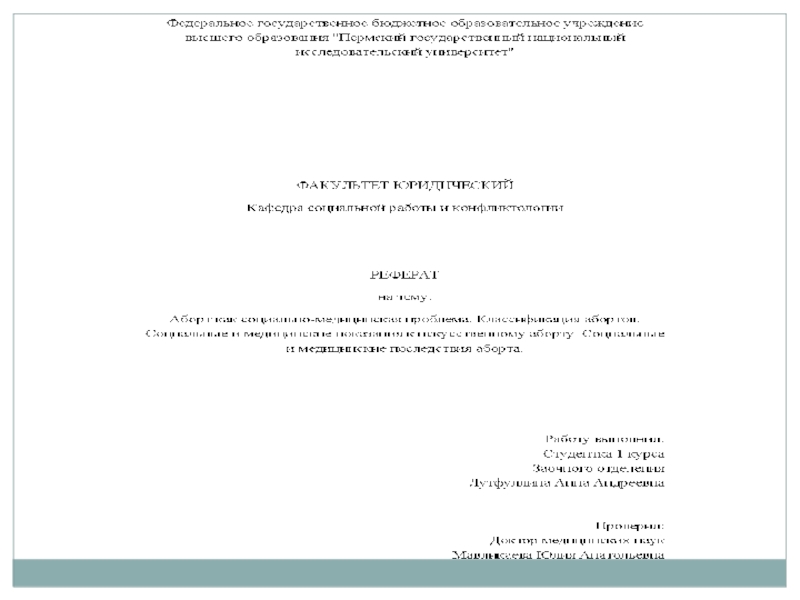Разделы презентаций
- Разное
- Английский язык
- Астрономия
- Алгебра
- Биология
- География
- Геометрия
- Детские презентации
- Информатика
- История
- Литература
- Математика
- Медицина
- Менеджмент
- Музыка
- МХК
- Немецкий язык
- ОБЖ
- Обществознание
- Окружающий мир
- Педагогика
- Русский язык
- Технология
- Физика
- Философия
- Химия
- Шаблоны, картинки для презентаций
- Экология
- Экономика
- Юриспруденция
Brand comparison: Boeing and airbus
Содержание
- 1. Brand comparison: Boeing and airbus
- 2. Airbus: IMage Airbus is a European multinational
- 3. Airbus: advertisement Airbus advertisement is mostly represented
- 4. Airbus: Unique Selling points The A380 handles
- 5. Airbus: Target MarketIt uses a mix of
- 6. Boeing: image The Boeing Company is an
- 7. Boeing: advertisementThe Boeing Company is known around
- 8. Boeing: unique selling pointsWhen the 787 was
- 9. Boeing: target marketA dedicated team at Boeing
- 10. Слайд 10
- 11. Скачать презентанцию
Airbus: IMage Airbus is a European multinational aerospace corporation that stood as the world's second biggest aerospace and defence company in 2018, behind only their primary competitor, Boeing. Airbus is registered
Слайды и текст этой презентации
Слайд 3Airbus: advertisement
Airbus advertisement is mostly represented as printed, digital
and outside (banners and etc.) ad. The basic layouts include
a key line, a headline, body text, the Airbus logo, web address and social media icons as well as a division or business sector descriptor if necessary.Airbus logo, web address and social media icons are fixed in position and size all other elements are flexible and can vary in position and size. Airbus advertisement did not involve any celebrities, yet there was a controversial advertisement banner posted just after Boeing introduced their new aircraft.
Слайд 4Airbus: Unique Selling points
The A380 handles 600 people, with
the right interior configuration. The A380 can handle all of
their luggage, plus a fair amount of cargo.Having 4 engines, it has redundancy if there is an in-flight emergency.
The A380 can handle a large amount of fuel, and can handle long-haul flights very easily. There are other planes that can do long-haul flights, but not with nearly as many passengers or baggage.
The A380 was one of the first planes to have a higher interior pressure, about equivalent to 6000 feet up. This means that passengers are more refreshed when they get to their destination.
The A380 was one of the first planes to use Trent engines, which made for a relatively quiet interior noise environment. It has been equaled since, but the A380 was the first.
The A380 has a configuration (common on Emirates) with a great wrap-around bar in the rear of business class.
Слайд 5Airbus: Target Market
It uses a mix of different segmentation strategies
such as demographic, geographic, and psychographic strategies in order to
cater to the customers of different nations.Selective targeting strategy is used by Airbus as its different aircraft are meant for a different set of customers.
It has positioned itself as an Airline carrier offering a value-based aircraft which are technologically advanced, aesthetically designed, safe & secure and their related services
Changing lifestyle, Increasing economic activities between the emerging nations, government regulations, increasing migrations of people, cargo activity, political stability and increasing demand for air travel in the commercial aircraft market are some of the factors shaping the aircraft market.
Out of the various nations globally, China and India are the 1st and 4th most important market based on aircraft delivery value.
Слайд 6Boeing: image
The Boeing Company is an American multinational corporation
that designs, manufactures, and sells airplanes, rotorcraft, rockets, satellites, telecommunications
equipment, and missiles worldwide. The company also provides leasing and product support services. Boeing is among the largest global aerospace manufacturers; it is the fifth-largest defense contractor in the world based on 2017 revenue, and is the largest exporter in the United States by dollar value. Boeing stock is included in the Dow Jones Industrial Average. Boeing is incorporated in Delaware.Слайд 7Boeing: advertisement
The Boeing Company is known around the world as
a leading manufacturer of commercial airplanes. What's less well known
is that Boeing is also a leader in space technology, defense aircraft and systems, and communication systems. Their advertising campaigns close the gap between current perceptions of Boeing and their true scope as a global aerospace company. Boeing uses printed, television, outside advertisement.Слайд 8Boeing: unique selling points
When the 787 was first announced, it
drew interests from multiple airlines for meeting what many would
call a comfort zone between efficiency, comfort and economics. One thing that made the airliner appealing over other options was its extreme fuel efficiency over competing wide-bodies.. The 787 was also appealing to airlines because of its passenger comfort over other airliners. The 787 was much quieter compared to any airliner on the market and the cabin pressure was significantly higher than any airliner.. The 787 also offered unique little features here and there for passengers. Let’s just list a few: the windows are almost double the size of competing aircrafts and the Windows shades have been replaced with electronic dimming, the cabin in much wider and taller that competing aircrafts, ambient light allows passengers to relax easier, it was released with the most advanced IFE (in flight entertainment) systems, and there is so much more.The 787 also offered unique features for pilots as well. The aircraft also had many features outside he plane which made it more appealing to customers than other aircrafts. Overall the 787 has many features which make it a highly technologically advanced aircraft over other aircrafts, and this makes it a appealing choice for many over aircrafts such as the a330 or a350.
Слайд 9Boeing: target market
A dedicated team at Boeing pores over reams
of economic, airline, travel, and fleet data annually to create
the market outlooks. From their first published market forecast in 1961, the number of commercial operators they forecast has increased to nearly 200 and passenger traffic has grown by a factor of nearly 70. More recently, since 2000, the global airline network has expanded 2.5 times, while industry innovation and productivity have enabled travelers to fly for nearly 40 percent lower average fares in real terms. Boeing's Commercial Airplanes segment develops, produces and markets commercial jet aircraftsand provides related support services, principally to the commercial airline industry worldwide.Boeing Defense, Space & Security's (BDS') primary customer is the is the United States Department of Defense (DoD) with 64%, 62%, 65%, 67%, 70%, 76% and 82% of BDS' revenues being derived from this customer in 2016, 2015, 2014, 2013, 2012, 2011 and 2010, respectively. Other significant revenues were derived from the National Aeronautics and Space Administration (NASA), international defense markets, civil markets and commercial satellite markets. In 2016, 2015, 2014, 2013, 2012 and 2011, 23%, 27%, 30%, 34%, 33% and 38% of Boeing's total revenues were derived from U.S. government contracts, respectively. In 2016, 2015, 2014, 2013,2012 and 2011, non-U.S. customers accounted for approximately 59%, 59%, 58%, 57%, 54% and 50% of Boeing's revenues
